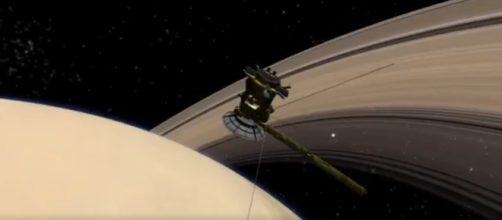NASA’s Cassini spacecraft was sent to Saturn to study the planet’s composition, its moons and its rings in 1997. And this September, the spacecraft is scheduled to perform its “death dive” to the planet Saturn to mark the end of its observation.
Cassini’s journey
There are only a few days left in the life of Cassini before its last maneuver on Sept. 15. Before the death plunge, the spacecraft performed dives in between Saturn and its rings to photograph the lesser-known areas in the region. This is the first time a man-made object was able to traverse the known “danger zone” giving scientists an exclusive peek into the rings of Saturn.
Cassini’s death was predetermined. In fact, a gravitational maneuver was performed last April 22 to send the spacecraft towards its death orbit preparing it to plunge into Saturn. Despite its final moments, the spacecraft continues to beam back data to Earth providing the probe with never-before-seen footages and information from the region.
Cassini’s many firsts
Linda Spilker, one of Cassini’s project scientists, said that the probe gave NASA many unique planetary revelations. The team expects nothing less from the mission until the very last day as it will pass through areas that haven’t been observed before. Cassini will send almost real-time data about the planet’s atmosphere during its plunge.
However, the Earth won’t witness the actual death of Cassini. According to NASA, engineers will lose contact with the spacecraft one to two minutes after its actual descent to the planet’s upper atmosphere. This is the reason why they will try to maximize the spacecraft during its initial descent where all of its 12 scientific instruments will be activated.
One of Cassini’s most important instruments is the neutral mass spectrometer (INMS), which will be used to analyze Saturn’s atmosphere. Data collected by the INMS may provide an insight into the planet’s origin and evolution. Meanwhile, the other instruments will capture detailed images of the surroundings in order to collect information about the planet’s temperature, auroras, and its poles.
NASA provided the public with a timeline of Cassini’s death dive. The spacecraft will make the last plunge between the planet and its rings on Sept. 9. On Sept. 11, it will perform a distant flyby to Saturn’s most controversial moon, Titan. And on Sept. 14, all the cameras aboard the spacecraft will take their final peek in the region including the planet’s moons and rings. Also on that day, Cassini will point its antenna to Earth to transmit all remaining data to the control base. The spacecraft will take the “final plunge” on Sept. 15 after sampling the planet’s atmosphere.


